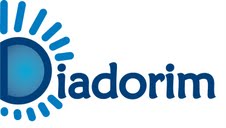ALDOSTERONA E HIPERTROFIA DO MIOCÁRDIO
DOI:
https://doi.org/10.13037/rbcs.vol11n37.1759Keywords:
aldosterona, hipertrofia, cardiomiócitos, mecanismos de ação intracelular.Abstract
Aldosterona atua em seus tecidos alvos classicamente por ligar-se a seu receptor mineralocorticóide (MR), localizado na região externa da membrana nuclear. Uma vez ativado, o agora então formado complexo receptor-aldosterona transloca-se para o núcleo, ligando-se a regiões responsivas cognatas do DNA, vindo assim ativar a transcrição de genes alvos. Além desse mecanismo conhecido como clássico para a aldosterona, outro mecanismo, mais rápido, envolvendo possivelmente receptores de membrana tem sido descrito. Ativação de PLC com clivagem de fosfolipídios de membrana e conseqüentemente aumento das concentrações de IP3, Ca2+ e AMPc vem sendo descritos na literatura, em ensaios celulares, após adição de aldosterona. Esses mecanismos têm sido denominados de não-genômicos ou simplesmente diretos do referido hormônio. Pacientes com aldosteronismo primário têm um aumento de risco de hipertrofia do ventrículo esquerdo comparados a pacientes hipertensos de severidade comparável. Porém o mecanismo de tal evento é ainda desconhecido. Trabalhos recentes têm demonstrado a participação de uma AKAP como molécula central em mecanismos que desencadeiam a hipertrofia de cardiomiócitos. Nesses trabalhos a ativação de ERK-5 além da participação de AMPc e Ca2+ foram predominantes no desencadear do processo hipertrófico. Nossa proposta aqui foi descrever os mecanismo intracelulares que levam as células de cardiomiócitos a desenvolverem hipertrofia mediada pela aldosterona, tanto por sua via clássica quanto pela direta ou não genômica.
Downloads
References
42. Dodge KL, Khouangsathiene S, Kapiloff MS, Mouton
R, Hill EV, Houslay MD, Langeberg LK, Scott JD. mAKAP
assembles a protein kinase A/PDE4 phosphodiesterase
cAMP signaling module. EMBO J. 2001 Apr; 20(8):1921-30.
43. Dodge-Kafka L, Soughayer J, Pare GC, Carlisle Michel
JJ, Langeberg LK, Kapiloff MS, Scott JD. The protein kinase
A anchoring protein mAKAP coordinates two integrated cAMP
effector pathways. Nature. 2005 Sep; 437(7058):574-8.
44. Kapiloff MS, Jackson N, Airhart N. mAKAP and the
ryanodine receptor are part of a multi-component signaling
complex on the cardiomyocyte nuclear envelope. J Cell
Sci. 2001 Sep; 114(Pt17):3167-76.
45. Marx SO, Reiken S, Hisamatsu Y, Jayaraman T, Burkhoff
D, Rosemblit N, Marks AR. PKA phosphorylation dissociates
FKBP12.6 from the calcium release channel (ryanodine
receptor): defective regulation in failing hearts. Cell. 2000
May; 101(4):365-76.
46. Pare GC, Bauman AL, McHenry M, Michel JJ, Dodge-
Kafka KL, Kapiloff MS. The mAKAP complex participates in
the induction of cardiac hypertrophy by adrenergic receptor
signaling. J Cell Sci. 2005 Dec; 118(Pt23):5637-46.
47. Ruehr ML, Russell MA, Ferguson DG, Bhat M, Ma J,
Damron DS, Scott JD, Bond M. Targeting of protein kinase
A by muscle A kinase-anchoring protein (mAKAP) regulates
phosphorylation and function of the skeletal muscle ryanodine
receptor. J Biol Chem. 2003 Jul; 278(27):24831-6.
48. Estrada M, Liberona JL, Miranda M, Jaimovich E.
Aldosterone- and testosterone-mediated intracellular calcium
response in skeletal muscle cell cultures. Am J Physiol
Endocrinol Metab. 2000 Jul; 279(1):E132-9.
49. Harvey BJ, Higgins M. Nongenomic effects of aldosterone
on Ca2+ in M-1 cortical collecting duct cells. Kidney Int.
2000 Apr; 57(4):1395-403.
50. Christ M, Wehling M. Rapid actions of aldosterone:
lymphocytes, vascular smooth muscle and endothelial
cells. Steroids. 1999 Jan-Feb; 64(1-2):35-41.
51. Gros R, Ding Q, Chorazyczewski J, Pickering JG,
Limbird LE, Feldman RD. Adenylyl cyclase isoform-selective
regulation of vascular smooth muscle proliferation and
cytoskeletal reorganization. Circ Res. 2006 Oct; 99(8):845-52.
52. Ma TK, Kam KK, Yan BP, Lam YY. Renin-angiotensinaldosterone
system blockade for cardiovascular diseases:
current status. Br J Pharmacol. 2010 Jul; 160(6):1273-92.
53. Byrne JA, Grieve DJ, Cave AC, Shah AM. Oxidative stress
and heart failure. Arch Mal Coeur Vaiss. 2003 Mar; 96(3):214-21.
54. Matavelli LC, Zhou X, Frohlich ED. Hypertensive renal
vascular disease and cardiovascular endpoints. Curr Opin
Cardiol. 2006 Jul; 21(4):305-9.
55. Grieve DJ, Byrne JA, Cave AC, Shah AM. Role of
oxidative stress in cardiac remodelling after myocardial
infarction. Heart Lung Circ. 2004 Jun; 13(2):132-8.
56. Dhalla NS, Saini-Chohan HK, Rodriguez-Leyva D,
Elimban V, Dent MR, Tappia PS. Subcellular remodelling
may induce cardiac dysfunction in congestive heart failure.
Cardiovasc Res. 2009 Feb; 81(3):429-38.
57. Sadoshima J, Izumo S. Molecular characterization of
angiotensin II-induced hypertrophy of cardiac myocytes
and hyperplasia of cardiac fibroblasts. Critical role of the
AT1 receptor subtype. Circ Res. 1993 Sep; 73(3):413-23.
58. Lorell BH. Role of angiotensin AT1, and AT2 receptors
in cardiac hypertrophy and disease. Am J Cardiol. 1999
Jun; 83(12A):48H-52H.
59. Takeda Y, Yoneda T, Demura M, Miyamori I, Mabuchi H.
Cardiac aldosterone production in genetically hypertensive
rats. Hypertension. 2000 Oct; 36(4):495-500.
60. Kagiyama S, Matsumura K, Fukuhara M, Sakagami
K, Fujii K, Iida M. Aldosterone-and-salt-induced cardiac
fibrosis is independent from angiotensin II type 1a receptor
signaling in mice. Hypertens Res. 2007 Oct; 30(10):979-89.
61. Matsumura K, Fujii K, Oniki H, Oka M, Iida M. Role of
aldosterone in left ventricular hypertrophy in hypertension.
Am J Hypertens. 2006 Jan; 19(1):13-8.
62. Suzuki G, Morita H, Mishima T, Sharov VG, Todor
A, Tanhehco EJ, Rudolph AE, McMahon EG, Goldstein
S, Sabbah HN. Effects of long-term monotherapy with
eplerenone, a novel aldosterone blocker, on progression
of left ventricular dysfunction and remodeling in dogs with
heart failure. Circulation. 2002 Dec; 106(23):2967-72.
63. Hayashi M, Tsutamoto T, Wada A, Tsutsui T, Ishii C, Ohno
K, Fujii M, Taniguchi A, Hamatani T, Nozato Y, Kataoka K,
Morigami N, Ohnishi M, Kinoshita M, Horie M. Immediate
administration of mineralocorticoid receptor antagonist
spironolactone prevents post-infarct left ventricular remodeling
associated with suppression of a marker of myocardial collagen
synthesis in patients with first anterior acute myocardial
infarction. Circulation. 2003 May; 107(20):2559-65.
52
RBCS Artigos de Revisão
Revista Brasileira de Ciências da Saúde, ano 11, nº 37, jul/set 2013
Referências
64. Pitt B, Reichek N, Willenbrock R, Zannad F, Phillips RA,
Roniker B, Kleiman J, Krause S, Burns D, Williams GH.
Effects of eplerenone, enalapril, and eplerenone/enalapril
in patients with essential hypertension and left ventricular
hypertrophy: the 4E-left ventricular hypertrophy study.
Circulation. 2003 Oct; 108(15):1831-8.
65. Okoshi MP, Yan X, Okoshi K, Nakayama M, Schuldt
AJ, O'Connell TD, Simpson PC, Lorell BH. Aldosterone
directly stimulates cardiac myocyte hypertrophy. J Card
Fail. 2004 Dec; 10(6):511-8.
66. Yang J, Chang CY, Safi R, Morgan J, McDonnell DP, Fuller
PJ, Clyne CD, Young MJ. Identification of ligand-selective
peptide antagonists of the mineralocorticoid receptor using
phage display. Mol Endocrinol. 2011 Jan; 25(1):32-43.
67. Dooley R, Harvey BJ, Thomas W. Non-genomic actions
of aldosterone: from receptors and signals to membrane
targets. Mol Cell Endocrinol. 2012 Mar; 350(2):223-34.
68. Grossmann C, Gekle M. New aspects of rapid aldosterone
signaling. Mol Cell Endocrinol. 2009 Sep; 308(1-2):53-62.
69. Araujo CM. Ação direta da aldosterona em cardiomiócitos
de ratos. Tese [Mestrado em Ciências Biológicas] -
Universidade Federal de Ouro Preto; 2010.
70. Yoshida Y, Morimoto T, Takaya T, Kawamura T, Sunagawa
Y, Wada H, Fujita M, Shimatsu A, Kita T, Hasegawa
K. Aldosterone signaling associates with p300/GATA4
transcriptional pathway during the hypertrophic response
of cardiomyocytes. Circ J. 2010 Jan; 74(1):156-62.
71. López-Andrés N, Iñigo C, Gallego I, Díez J, Fortuño MA.
Aldosterone induces cardiotrophin-1 expression in HL-1 adult
cardiomyocytes. Endocrinology. 2008 Oct; 149(10):4970-8.
72. Doi T, Sakoda T, Akagami T, Naka T, Mori Y, Tsujino T,
Masuyama, Ohyanagi M. Aldosterone induces interleukin-18
through endothelin-1, angiotensin II, Rho/Rho-kinase, and
PPARs in cardiomyocytes. Am J Physiol Heart Circ Physiol.
2008 Sep; 295(3):H1279-87.
73. Mohammed SF, Ohtani T, Korinek J, Lam CS, Larsen
K, Simari RD, Valencik ML, Burnett JC Jr, Redfield MM.
Mineralocorticoid accelerates transition to heart failure
with preserved ejection fraction via "nongenomic effects".
Circulation. 2010 Jul; 122(4):370-8.
74. Stas S, Whaley-Connell A, Habibi J, Appesh L, Hayden
MR, Karuparthi PR, Qazi M, Morris EM, Cooper SA, Link CD,
Stump C, Hay M, Ferrario C, Sowers JR. Mineralocorticoid
receptor blockade attenuates chronic overexpression of the
renin-angiotensin-aldosterone system stimulation of reduced
nicotinamide adenine dinucleotide phosphate oxidase and
cardiac remodeling. Endocrinology. 2007 Aug; 148(8):3773-80.
75. Brilla CG, Matsubara LS, Weber KT. Antifibrotic effects of
spironolactone in preventing myocardial fibrosis in systemic
arterial hypertension. Am J Cardiol. 1993 Jan; 71(3):12A-16A.
76. Brilla CG, Zhou G, Matsubara L, Weber KT. Collagen
metabolism in cultured adult rat cardiac fibroblasts: response
to angiotensin II and aldosterone. J Mol Cell Cardiol. 1994
Jul; 26(7):809-20.
77. Campbell SE, Janicki JS, Weber KT. Temporal differences
in fibroblast proliferation and phenotype expression in
response to chronic administration of angiotensin II or
aldosterone. J Mol Cell Cardiol. 1995 Aug; 27(8):1545-60.
78. Brilla CG, Weber KT. Mineralocorticoid excess, dietary
sodium, and myocardial fibrosis. J Lab Clin Med. 1992
Dec; 120(6):893-901.
79. Rocha R, Martin-Berger CL, Yang P, Scherrer R, Delyani
J, McMahon E. Selective aldosterone blockade prevents
angiotensin II/salt-induced vascular inflammation in the rat
heart. Endocrinology. 2002 Dec; 143(12):4828-36.
80. Marney AM, Brown NJ. Aldosterone and end-organ
damage. Clin Sci (Lon). 2007 Sep; 113(6):267-78.
81. Pechánová O, Bernátová I, Pelouch V, Babál P. L-NAMEinduced
protein remodeling and fibrosis in the rat heart.
Physiol Res. 1999; 48(5):353-62.
82. Ferrini MG, Vernet D, Magee TR, Shahed A, Qian A,
Rajfer J, Gonzalez-Cadavid NF. Antifibrotic role of inducible
nitric oxide synthase. Nitric Oxide. 2002 May; 6(3):283-94.
83. Carlström M, Persson AE, Larsson E, Hezel M,
Scheffer PG, Teerlink T, Weitzberg E, Lundberg JO.
Dietary nitrate attenuates oxidative stress, prevents
cardiac and renal injuries, and reduces blood pressure
in salt-induced hypertension. Cardiovasc Res. 2011
Feb; 89(3):574-85.
84. Hunter JC, Zeidan A, Javadov S, Kilic A, Rajapurohitam
V, Karmazyn M. Nitric oxide inhibits endothelin-1-induced
neonatal cardiomyocyte hypertrophy via a RhoA-ROCKdependent
pathway. J Mol Cell Cardiol. 2009 Dec;
47(6):810-8.
Downloads
Published
Issue
Section
License
Copyright (c) 2014 Mauro Cesar Isoldi, Aleçandra Maria Maciel Isoldi

This work is licensed under a Creative Commons Attribution-NonCommercial-NoDerivatives 4.0 International License.
Policy Proposal for Journals offering Free Delayed Access
Authors who publish in this magazine agree to the following terms:
- Authors maintain the copyright and grant the journal the right to the first publication, with the work simultaneously licensed under a Creative Commons Attribution License after publication, allowing the sharing of the work with recognition of the authorship of the work and initial publication in this journal.
- Authors are authorized to assume additional contracts separately, for non-exclusive distribution of the version of the work published in this magazine (eg, publishing in institutional repository or as a book chapter), with the acknowledgment of the authorship and initial publication in this journal.
- Authors are allowed and encouraged to publish and distribute their work online (eg in institutional repositories or on their personal page) at any point before or during the editorial process, as this can generate productive changes, as well as increase impact and citation of the published work (See The Effect of Open Access).









